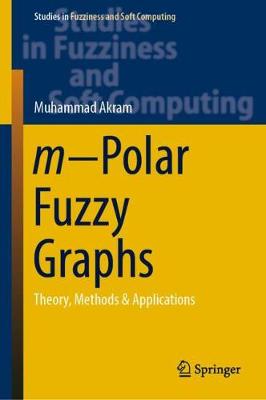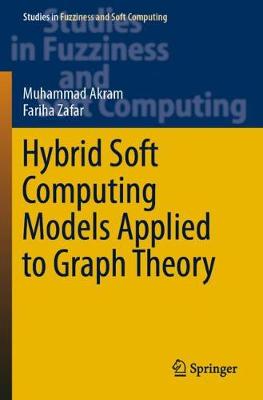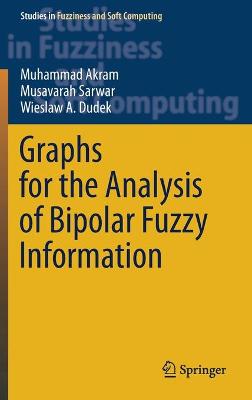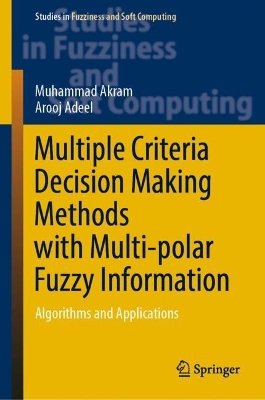Studies in Fuzziness and Soft Computing
5 primary works
Book 371
Book 380
Hybrid Soft Computing Models Applied to Graph Theory
by Muhammad Akram and Fariha Zafar
This book describes a set of hybrid fuzzy models showing how to use them to deal with incomplete and/or vague information in different kind of decision-making problems. Based on the authors' research, it offers a concise introduction to important models, ranging from rough fuzzy digraphs and intuitionistic fuzzy rough models to bipolar fuzzy soft graphs and neutrosophic graphs, explaining how to construct them. For each method, applications to different multi-attribute, multi-criteria decision-making problems, are presented and discussed. The book, which addresses computer scientists, mathematicians, and social scientists, is intended as concise yet complete guide to basic tools for constructing hybrid intelligent models for dealing with some interesting real-world problems. It is also expected to stimulate readers' creativity thus offering a source of inspiration for future research.
Book 390
Fuzzy Hypergraphs and Related Extensions
by Muhammad Akram and Anam Luqman
This book presents the fundamental and technical concepts of fuzzy hypergraphs and explains their extensions and applications. It discusses applied generalized mathematical models of hypergraphs, including complex, intuitionistic, bipolar, m-polar fuzzy, Pythagorean, complex Pythagorean, and q-rung orthopair hypergraphs, as well as single-valued neutrosophic, complex neutrosophic and bipolar neutrosophic hypergraphs. In addition, the book also sheds light on real-world applications of these hypergraphs, making it a valuable resource for students and researchers in the field of mathematics, as well as computer and social scientists.
Book 401
Graphs for the Analysis of Bipolar Fuzzy Information
by Muhammad Akram, Musavarah Sarwar, and Wieslaw A Dudek
This monograph discusses decision making methods under bipolar fuzzy graphical models with the aim of overcoming the lack of mathematical approach towards bipolar information-positive and negative. It investigates the properties of bipolar fuzzy graphs, their distance functions, and concept of their isomorphism. It presents certain notions, including irregular bipolar fuzzy graphs, domination in bipolar fuzzy graphs, bipolar fuzzy circuits, energy in bipolar fuzzy graphs, bipolar single-valued neutrosophic competition graphs, and bipolar neutrosophic graph structures. This book also presents the applications of mentioned concepts to real-world problems in areas of product manufacturing, international relations, psychology, global terrorism and more, making it valuable for researchers, computer scientists, social scientists and alike.
Book 430
Multiple Criteria Decision Making Methods with Multi-polar Fuzzy Information
by Muhammad Akram and Arooj Adeel
This book presents an extension of fuzzy set theory allowing for multi-polar information, discussing its impact on the theoretical and practical development of multi-criteria decision making. It reports on set of hybrid models developed by the authors, and show how they can be adapted, case by case, to the lack of certainty under a variety of criteria. Among them, hybrid models combining m-polar fuzzy sets with rough, soft and 2-tuple linguistic sets, and m-polar hesitant fuzzy sets and hesitant m-polar fuzzy are presented, together with some significant applications. In turn, outranking decision-making techniques such as m-polar fuzzy ELECTRE I, II, III and IV methods, as well as m-polar fuzzy PROMETHEE I and II methods, are developed. The efficiency of these decision-making procedures, as well as other possible extensions studied by the authors, is shown in some real-world applications. Overall, this book offers a guide on methodologies to deal with the multi-polarity and fuzziness of the real-world problems, simultaneously. By including algorithms and computer programming codes, it provides a practice-oriented reference guide to both researchers and professionals working at the interface between computational intelligence and decision making.




